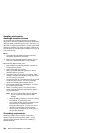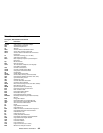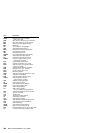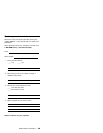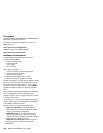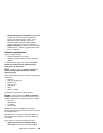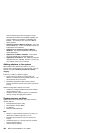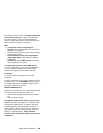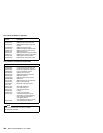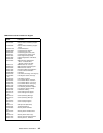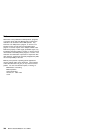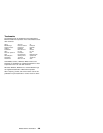have the advantage of faster throughput, but the
disadvantage of limited error-handling capability and
reduced software and hardware compatibility and
flexibility. This method is not used in the IBM PC
Series systems.
Operating system to BIOS to hardware. This is the
recommended way. It's the most flexible because it's
independent of the hardware.
Applications to operating system to BIOS to
hardware. This method is inflexible and operating
system dependent.
Applications to BIOS to hardware. This method
has some flexibility but it is BIOS dependent.
Applications to hardware. This method is hardware
dependent and very inflexible, however, it is very fast,
very efficient, and it has no overhead.
Adding adapters to the system
When adapters are added to the system, an area in
memory has to be allocated to run its programs. This can
be done with either hardware switches or software
mapping.
If there is a conflict in software mapping:
The first device to attach to an IRQ, DMA, I/O
Address, or RAM location will probably function. The
second device will not be found.
Standalone diagnostics might function properly
because the device that was found is the only device
running.
Software configuration conflicts occur when:
Hardware is configured differently then the software
using it expects it to be.
Hardware memory address space is in conflict with
memory used by the application software.
System resource conflicts
System failures occur when there are system resource
conflicts with the:
Interrupt Request Queue (IRQ)
Direct Memory Access (DMA)
I/O Address
ROM and RAM Addresses
IRQ:
Assigns a unique interrupt request line to every I/O
device (line numbers range from 0 to 15).
Interrupts the processor to force it to service the
request.
Handles interrupts on a priority basis (low numbers
have the highest priority).
Queues interrupt request.
344 IBM PC 300/IntelliStation Vol 3 HMM



